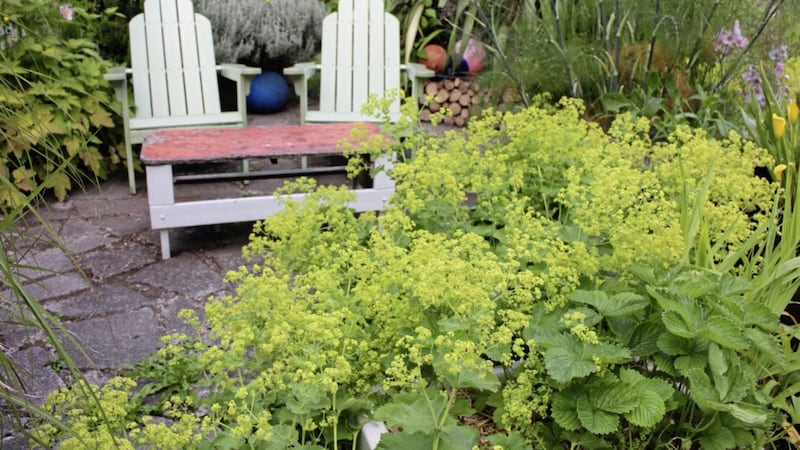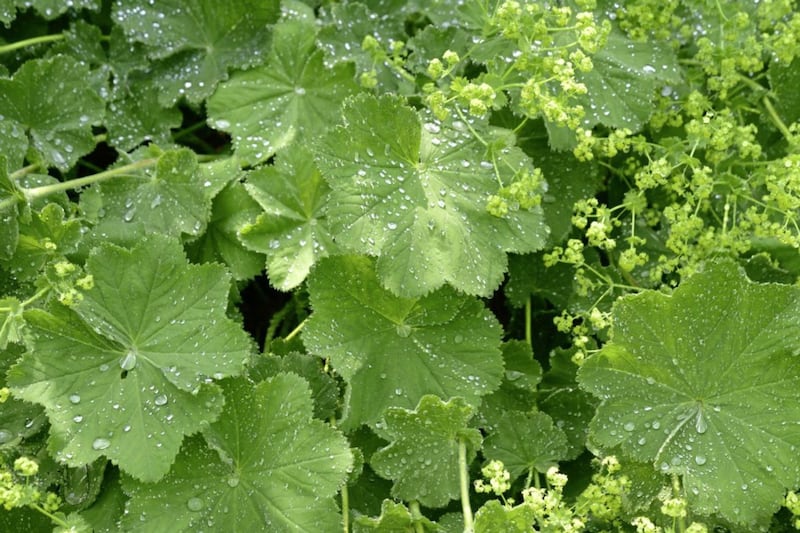THE Royal Warrant is bestowed upon goods that are used by the British royal household. More than 800 companies' products bear the royal coat of arms as an indication of their status, with items including Weetabix, Gordon's Gin and Hunter wellies. Cigarette brands Benson & Hedges and Silk Cut once displayed the Royal Warrant but it was withdrawn in 1999 after anti-smoking campaigners complained the endorsement gave the products a "lustre of respectability and prestige".
I must confess that I'm no great royalist, yet can't help think that if I'd made something and it was bought and utilised by someone in the royal household, then I'd be at very least flattered and may even boast about the endorsement.
I mention this because on a recent visit to the garden's at Hillsborough Castle, as documented on these vary pages last month, it was great to see Alchemilla mollis - AKA lady's mantle - growing in the gaps between slabs of sandstone on the south terrace at the back of the house.
We expect the gardens of such grand, stately houses – Hillsborough Castle is, after all, Queen Elizabeth's official residence in the north – to be manicured and neat, not to have self-seeding plants between cracks in the paving.
It was, in effect, a royal endorsement of my own planting scheme at home, whereby Alchemilla mollis is allowed to flourish in places where it settles itself in and around the crazy paving patio. As a consequence, I'm even considering renaming my patio the 'east terrace'.
Unlike the self seeding, biennial champion that featured in last week's column – great or wooly mullein (Verbascum thapsus) – lady's mantle is a perennial that can be easily uprooted from where it seeds itself and placed somewhere more preferable.
Yet in many ways, it is this plant's preference for those under utilised places that makes it all the more appealing. Its clouds of flowers will soften the hardest edges, immediately looking at home in a crack where only grass or a dandelion would otherwise grow.
It is by no means a showy plant and much of the time goes unnoticed. It's like an album filler or a sorbet, never intended to stop you in your tracks but serving a useful purpose nonetheless.
While there are fewer plants in the garden less pretentious there aren't many more versatile. It's essentially a ground cover plant but one that doesn't bully those around and is reasonably easy to contain.
The fact that it seeds itself freely can be an advantage or a curse, depending on your outlook. Alchemilla mollis is not a plant you're likely to see for sale anywhere and if someone suggests you pay for it, tell them where to go.
Instead find a fellow gardener who'll happily give you a couple of small plants to get a colony going. It flowers from June through to September but the blooms are, at a glance, nondescript lime green clusters. On very close inspection they reveal scores of dainty, yellow daisy-like flowers that complement cut-flower displays.
A classic cottage garden plant, it's through a combination of frothy flowers and foliage that lady's mantle somehow excels, as together they provide the perfect foil for more distinctive and colourful plants. Some even regard it as the 'glue' that bonds a planting scheme together.
The secret to its success is finding the right balance, whereby it provides a perfect supporting role without becoming ubiquitous.




